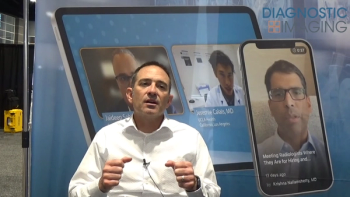
Of pride and prejudice
By Greg Freiherr, Editor, gfreiherr@cmp.comMany of us share an almost naive belief that truth is an absolute, that there is a right and a wrong and that’s all. In
By Greg Freiherr, Editor,
Many of us share an almost naive belief that truth is an absolute, that there is a right and a wrong and that’s all. In practice, each of us has a very personalized brand of truth. It was shaped by the environment in which we were raised and nurtured by the environment in which we live.
We may be part of a new or old nation, a big or small company, a powerful or weak team, a growing or declining market. And these are not the only influences. Our attitude-hopeful or fearful, dominant or submissive, self-righteous or compromising-enters into the decision processes that play out daily.
We interpret events in the business world as much for what they mean over the short and long term as for what actually happened and what caused them to happen. The danger is that in defining these events and trying to see the subtle or underlying message, we may see what is not really there. We may see what we expect to see. And even that is changing.
Not long ago, Elscint, ADAC, Sopha, Summit, Acuson, Vingmed, Diasonics, and ATL were viable entities. For these and many others, their character has changed radically. The world has gotten smaller. The dominant have become more dominant.
This consolidation has had an effect. There is fear in the imaging world arising from a decline in competition. For customers, fewer choices can lead to higher prices and a reduced pace of innovation. To those in industry, consolidation means fewer jobs, less opportunity, and a higher wall for smaller companies to scale.
Now color this picture with nationalism. As much as we congratulate ourselves on being global, we are nevertheless a conglomeration of nations. The pride in our flags, traditions, and societies takes precedence, and this pride bleeds into the corporate fabric. Toshiba and Hitachi are Japanese, GE is American, Siemens German, Philips Dutch. These companies reflect the cultures and environments of their leaders, as all companies of all sizes do. What is unsettling is the tendency for those in imaging to view companies with nationalistic fervor.
These numerous influences present an enormous challenge. Over the past year, I have witnessed an unprecedented rise in emotion. Much is the result of selective perception determined by biases that have no place in rational analyses.
Individually, and as an industry, we need to sort through our perceptions and determine whether our own particular brand of truth is indeed the product of facts. If not, we need to change it.
Newsletter
Stay at the forefront of radiology with the Diagnostic Imaging newsletter, delivering the latest news, clinical insights, and imaging advancements for today’s radiologists.




























